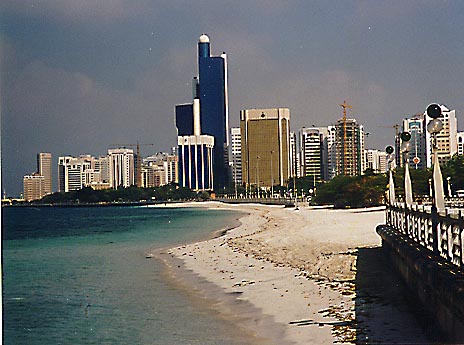In a nationwide referendum on October 7, Costa Ricans approved a free trade pact with the United States through the Central American Free Trade Agreement (CAFTA). What does approval of the agreement mean for Costa Rica’s telecom sector? Will we see a flood of foreign telecom investment pour into the country? Will state-owned ICE continue to dominate the telecom sector for the foreseeable future?
Vicente Lines, Partner at Arias & Muñoz in Costa Rica: Costa Rica must first approve legislation to free ICE from restrictions in management of procurement and financial affairs. As part of a clever political compromise, strengthening ICE would allow the creation of a regulatory framework. The private sector has been marginalized in the telecom sector due to a lack of regulation. Sadly, CAFTA’s framework does not immediately open the floodgates to telecom investment. CAFTA only opens three sectors to competition: 1) closed user group services (or private network services); 2) Internet services; and 3) mobile wireless services. Private enterprise already intervenes through agreements with ICE and its subsidiary RACSA in the provision of private network services. Widespread broadband Internet access has been a reality in Costa Rica for years through the privately held cable television operator, AMNET, and its arrangement with RACSA. It is unlikely the government will license spectrum in the next year. Thus, ICE will command a hefty market share in the short term. Although greenfield investment seems a relatively hard sell, ICE faces challenges upon CAFTA’s implementation. AMNET’s substantial deployment of its HFC (hybrid fiber-coax) network in urban areas makes it a formidable platform for the provision of triple-play services to consumers, and a potentially attractive acquisition target. ICE’s woefully slow customer service and failure in implementing prepaid mobile services and mobile handset financing present an attractive opportunity. The true appeal of the market will ultimately turn on how solid the regulatory framework and related institutions are. This is still an open question, to be partially answered by passage of the implementing legislation.
Wally Swain, Senior Vice President for Emerging Markets at The Yankee Group: Costa Ricans’ majority endorsement of CAFTA has many implications for the country, but telecom may see the biggest change. Despite high technology ratings in World Economic Forum dimensions, the market is complicated by state-owned monopoly ICE. Just one example: ICE has had to stop selling mobile subscriptions because of a lack of sufficient capacity, phones, or both. Complex bidding practices slowed down the provisioning cycle. Corruption is another factor. Allegations surrounding a mobile infrastructure contract awarded a couple of years ago have resulted in an ongoing investigation and several arrests. Finally, strong unions have resisted change, both external—like the CAFTA provision to liberalize the market—and internal. We don’t expect this to improve overnight with the approval of CAFTA; the government still has to get privatization or new licenses approved by Congress, and the political cost will be challenging, especially that demanded by the unions. There will certainly be a line of well-qualified interested parties ready to invest, given the country’s otherwise favorable economic climate and its geographical position in Central America. Telefonica, Telmex/America Movil, Millicom, and Digicel all have interests in nearby markets. Even if ICE doesn’t privatize, Costa Ricans can benefit from new entrants if the scenario plays out as in Colombia and Uruguay. Disappointment will set in if the scenario eventually plays out like Ecuador.
Panos Loukos, Latin America Research Analyst in the Telecoms Practice at Global Insight: In the short term, the approval of the agreement will have limited impact. Global Insight expects that it will take three to four years for the liberalization to be approved and then implemented. As a result, foreign investment will only gradually flow into the Costa Rican telecom sector, with the most likely longer-term investors including Mexico’s America Movil/Telmex and Spain’s Telefonica. ICE’s head start over potential competitors will mean that it will remain dominant for several years. However, its dominance and ownership by the state will hinder technological and service innovation. The experience of other countries has shown that the introduction of competition, foreign investment, and new technologies will benefit both the high-income and lower-income segments. Digicel, which competes against Cable and Wireless in the Caribbean, has successfully won market share from long-standing monopolies on the basis of lower pricing and better branding. (Source: http://www.latinbusinesschronicle.com/app/article.aspx?id=1731).
A number of latest telecom/telecommunication reports are available at Parfields Research covering a wide variety of countries and markets from around the world. You may check out the list at: http://www.marketsandreports.com/search.aspx?keys=telecom&cat=0. Discounts are also available ! Write to us at info@marketsandreports.com.
Filed under: Countries, Telecommunication | Tagged: Telecom | Leave a comment »


